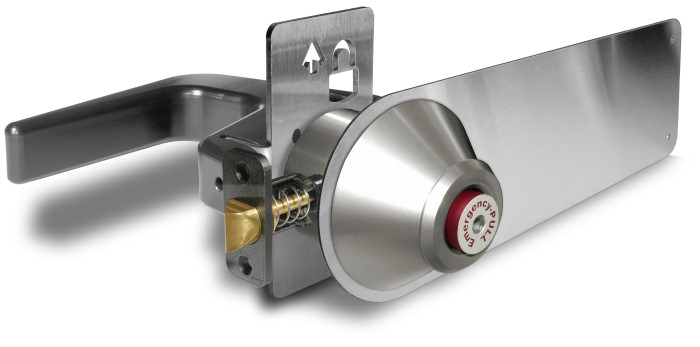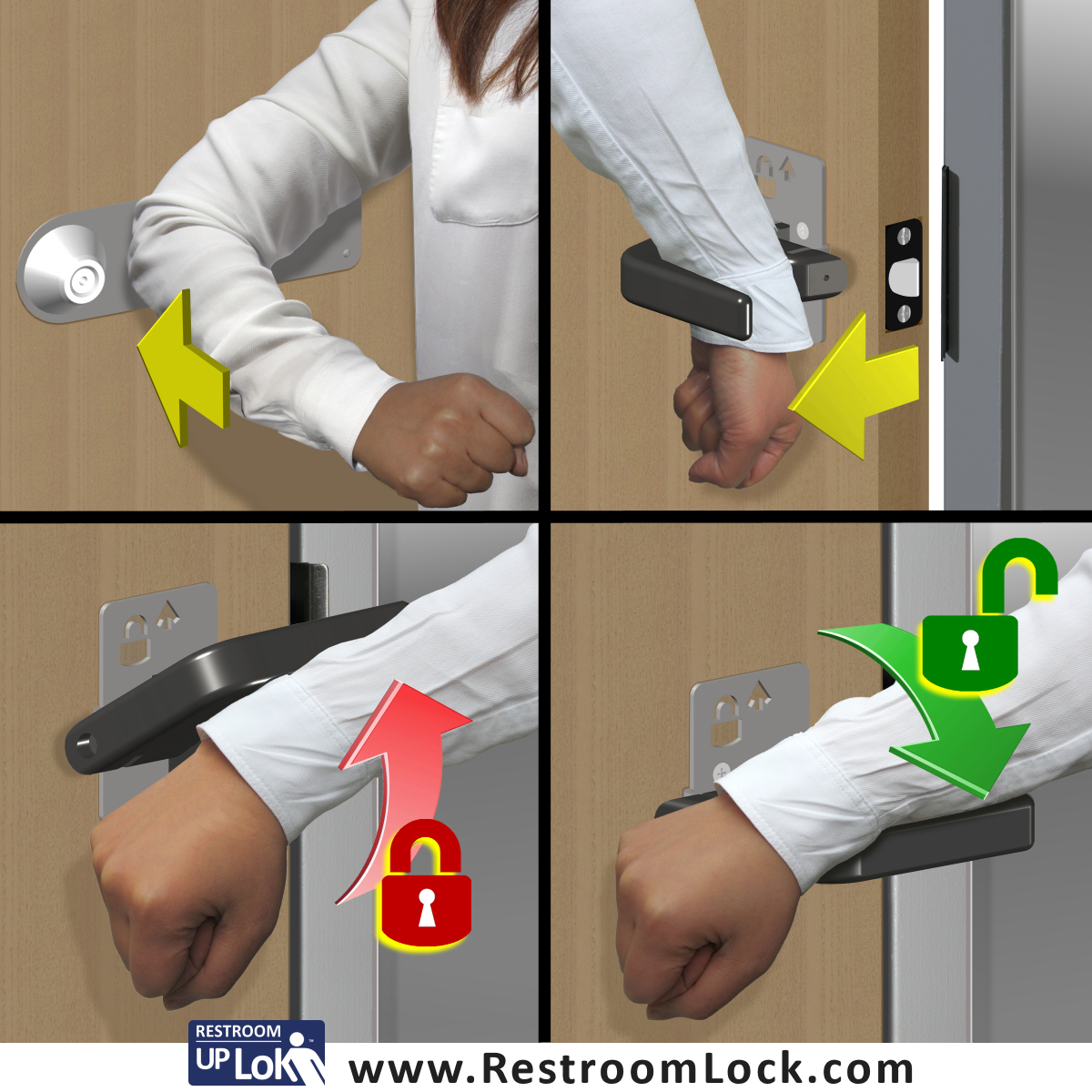 An interesting product came across my desk recently, that is designed to allow hands-free operation of restroom doors. The issue of touchless openings is one that many facility managers are struggling with, and a company in Vancouver, BC has been working on this project since long before anyone had heard of Covid-19. After all, restroom door hardware can be a source of various types of germs, and automatic operators are not feasible for every opening.
An interesting product came across my desk recently, that is designed to allow hands-free operation of restroom doors. The issue of touchless openings is one that many facility managers are struggling with, and a company in Vancouver, BC has been working on this project since long before anyone had heard of Covid-19. After all, restroom door hardware can be a source of various types of germs, and automatic operators are not feasible for every opening.
One option I’ve seen to address manually-operated doors with latching hardware is the use of lever retrofits that allow levers to be operated with a forearm. You may have seen some of the 3D-printed patterns that have been made available in the last 6 months, but I have some concerns. How durable is that application? Will it damage the finish on the hardware? Does it affect the warranty of the existing lockset? There are potential code issues with the lever retrofits as well…is the hardware still operable with no special knowledge or effort once the adaptor is attached? Can the door be unlatched with one operation and with no tight grasping, pinching, or twisting of the wrist?
 While there are existing products available to help reduce contact with doors and hardware, I think there are still plenty of opportunities for innovation (and you know how I love code-compliant creativity!). An alternative to modifying the existing lever on a restroom door is replacing the privacy set with something specifically designed to reduce contact with hands. The Restroom UP LoK is not a retrofit lever adaptor – it’s a replacement privacy set that fits an existing cylindrical lock prep. I’m interested in your constructive feedback on this idea. Below is an installation video that also briefly shows how the privacy set operates. You can find more information about the product on their website – restroomlock.com.
While there are existing products available to help reduce contact with doors and hardware, I think there are still plenty of opportunities for innovation (and you know how I love code-compliant creativity!). An alternative to modifying the existing lever on a restroom door is replacing the privacy set with something specifically designed to reduce contact with hands. The Restroom UP LoK is not a retrofit lever adaptor – it’s a replacement privacy set that fits an existing cylindrical lock prep. I’m interested in your constructive feedback on this idea. Below is an installation video that also briefly shows how the privacy set operates. You can find more information about the product on their website – restroomlock.com.
Does this type of operation help to solve the problem of restroom germ transmission?
Have any of you installed this product or seen it in use?
WWYD?
~~~
For more information on code requirements that may affect touchless openings, refer to this Decoded article, or watch my webinar – Decoded: Touchless Solutions for Healthy Environments.
You need to login or register to bookmark/favorite this content.





The two biggest concerns I would have would be: the use of 3D printed plastic parts and that the lever must be lifted despite it appearing to need to turn. The orientation of the lever is the same as any turning lever design, but the operation is different. Most people will screw up the first few times and this will quickly lead to wear on the plastic.
I agree with Andrew. In commercial applications, you may daily visitors that would be unfamiliar with the lock and when you have to go is not the time to try and figure out how it works.
I’ve been looking for a grade 1 cylindrical privacy lockset with an indicator for years from both Allegion and ASSA Abloy. Vizilock makes something but it is not grade 1 and doesn’t last in high traffic areas. If someone could come up with this with something similar to above (mostly touchless) they would make a mint!
Great idea…but virus’ live on other surfaces besides hands…so I am not sure the inconvenience of operation would be worth the cost and retrofit. The ROI for both health and cycle count might not justify the costs.
I have heard desire for a mechanical cylindrical lock with an indicator.
The main problem I see with this solution for California is the California State Fire Marshall requirement that calls for levers to return within 1/2″ of the face of the door. Looks like if it had the return to the door it wouldn’t function as desired.
Also, how would you measure operational force? Seems like you wouldn’t have as much leverage but maybe it’s fine..
This feels like something that is asking for broken hardware or broken arms. I’ve had my arm try to get caught when I’m moving too fast through a door with a lever and it isn’t much fun. Granted, I should probably be paying a bit more attention, but I figure my experience probably isn’t unique.
The scenario that comes to mind is that you unlock the door, stick your forearm behind the lever, pull the door which rotates, and you probably move forward at least a bit to start through the door. In this scenario, your arm is trapped on one side by the lever and on the other side by your shoulder with the edge of the door in the center applying pressure to the arm. It is important to note that there is movement of the body and the door through this entire scenario.
I like the ingenuity, but am not sure of the overall application and potential issues.
From a hygienic perspective all this product does is move whatever bacteria, virus, or other contaminants. might be on the lever to either your forearm or sleeve. And that should probably be significant considering all of the pushing, pulling, and twisting hands will do trying to operate an unfamiliar device.
Also, considering how we use our forearms in most office environments and restaurants/pubs these days I do not see any tangible improvement in lessing the spread of germs. For facilities that do wipe down high touch surfaces on a periodic basis this device will definitely increase the time to clean each door.
I doubt ADA would be to excited about this device, especially when considering the blind community.